You are a general practitioner in London. You heard in the news yesterday that there will be a heat wave; today the heat index is 107°F (41.6°C). You are making a home visit to see some of your most vulnerable patients. You receive a call from your patient’s niece, who reports that her aunt is not doing so well. Ms. Betty is an 83-year-old woman with congestive heart failure, atrial fibrillation, and chronic kidney disease.
This case will guide you through a clinical encounter to understand the patient's health challenges – and how to respond.
LEARNING OBJECTIVES
Analyze current epidemiology regarding heat-related morbidity and mortality and how this is expected to change with climate change
Articulate how heat exposure impacts existing health inequities
Connect the impact of increasing global temperatures to ecosystem health and how this in turn impacts human health
Recognize the clinician’s role in climate change mitigation and adaptation to prevent worsening impacts of heat on human health
CLINICAL COMPETENCIES
Integrate a history of the patient’s environment with individual risk factors for heat illness and heat sensitive diseases
Identify the signs and symptoms of heat illness
Access and interpret heat indices and incorporate them into patient counseling
Develop preventative counseling for all patients on steps to prevent heat illness, involving both host susceptibility and environmental vulnerability
Develop management plans for heat-related illness that address both host and environmental factors
A Continuing Medical Education activity presented by the Stanford Center for Innovation in Global Health and the University of Washington. View CE information and claim credit HERE.
Accreditation
In support of improving patient care, Stanford Medicine is jointly accredited by the Accreditation Council for Continuing Medical Education (ACCME), the Accreditation Council for Pharmacy Education (ACPE), and the American Nurses Credentialing Center (ANCC), to provide continuing education for the healthcare team.
Credit Designation
American Medical Association (AMA)
Stanford Medicine designates this Enduring Material for a maximum of 1.5 AMA PRA Category 1 Credits™.
Physicians should claim only the credit commensurate with the extent of their participation in the activity.
American Nurses Credentialing Center (ANCC)
Stanford Medicine designates this Enduring Material for a maximum of 1.5 ANCC contact hours.
American Academy of Physician Associates (AAPA)
Stanford Medicine has been authorized by the American Academy of PAs (AAPA) to award AAPA Category 1 CME credit for activities planned in accordance with AAPA CME Criteria.
This enduring activity is designated for 1.5 AAPA Category 1 CME credits. Approval is valid until December 14th, 2026. PAs should only claim credit commensurate with the extent of their participation.
Approach to the Patient With Heat Illness
Consider the following questions as you work through this case:
Assess the patient:
What are the signs of heat illness?
How susceptible or vulnerable is the patient? (Consider host factors)
Assess the environment:
How much heat exposure is the patient experiencing?
What are other environmental risks for heat illness?
Manage the patient:
How would you approach treatment of heat illness?
How would you improve other host factors?
Reduce exposures / improve the environment:
How should the patient reduce heat exposure?
What are other environmental steps?
History
Taking a clinical history of your patient yields the following information:
Chief complaint
- Patient says she is tired and feels faint when she stands up. Her legs have also been a little more swollen recently.
History of present illness
- Swelling has been gradual.
- No increase in sodium intake.
- No chest pain, shortness of breath, palpitations.
- Tiredness and feeling faint started today. She is thirsty but is worried about drinking a lot of fluids because of her leg swelling.
Past medical & surgical history
- CHF with ejection fraction 40%. Atrial fibrillation. Hypertension. Chronic kidney disease stage III.
Medications
- Lisinopril 20 mg, furosemide 20 mg, metoprolol XR 100 mg, apixaban 5 mg bid
Allergies
- No known drug allergies
Family history
- Son with hypertension
Social & enviromental history ("Social-E")
- Lives alone, glass of wine three times a week, no tobacco. Niece lives nearby.
- House has 3 floors, no air conditioner, fan is broken.
- Patient’s niece is concerned about forecast of heat wave. The patient did not receive any heat health warnings.
- She has never had heat illness before
Review of systems
- Non contributory
Discussion
What are some host factors increasing Ms. B’s susceptibility to heat?
What are some environmental factors increasing Ms. B’s risk of heat illness?
What other information would be helpful to know?
Host Risk Factors for Heat Illness
CONSIDER the following risk factors for heat illness:
*BOLDED FACTORS are pertinent to MS. B
Age
- Elderly
- Infants / young children
Medical comorbidities
- Heart disease
- Respiratory disease
- Chronic kidney disease
- Diabetes
- Psychiatric conditions
- Pregancy
- Obesity
- History of heat illness
Medications
- Psychiatric meds (SSRIs), ACE inhibitors, betablockers, thiazides, other diuretics, anticholinergics, dopamine antagonists, serotonin antagonists, NSAIDS, sympathomimetics, thyroxine, recreational drugs
Mobility
- Does not leave house daily
- Bedbound
Social
- Lives alone
- No or few social contacts
Independence
- Unable to care for oneself
Economic
- Poverty
Environmental Risk Factors for Heat Illness
CONSIDER the following risk factors for heat illness:
*BOLDED FACTORS are pertinent to MS. B
Exposure
- How hot?
- Humidity?
Occupation
- Outdoor work generally higher risk (farming, construction, mining, sports, etc.)
- Indoor work in underventilated buildings also a risk
Location
- Rural or urban? (consider urban heat island effect)
- Lack of trees and green space
Housing
- No air conditioning
- Lack of shade
- Southern exposure (in the northern hemisphere)
- Living on high floors
- Lack of housing or unstable housing
Community
- Lack of cooling shelters (or patient unaware of these)

Physical Exam
When you examine your patient, you learn the following:
General
- Elderly female sitting in chair, no acute distress, pleasant. The room is warm.
- Vitals: Temp 100°F (37.7°C) orally, HR 82 bpm, BP 130/82, SpO2 93% in room air, weight up 4lb (1.8kg) since last visit
HEENT
- Moist mucus membranes, upper and lower dentures present
Neck
- Unremarkable
Cardiovascular
- Rate about 100 bpm and irregularly irregular rhythm, no murmurs/rubs/gallops, JVP 10cm
- 1+ pitting edema to the knees bilaterally
Lungs
- Few crackles bilaterally, respiratory rate 16
Abdominal & rectal
- Soft, nontender, no fluid wave
Skin
- Chronic venous stasis changes in lower legs bilaterally
Musculoskeletal
- Unremarkable
Neurological
- Alert and oriented x3
- Strength generally decreased; when asked to stand and walk, she has difficulty getting out of chair and appears shaky
Key Takeaways from Physical
LEARN HOW TO recognize signs of heat illnesS:
Hemmelgarn C, Gannon K. Heatstroke: thermoregulation, pathophysiology, and predisposing factors. Compend Contin Educ Vet. 2013 Jul;35(7):E4. PMID: 23677841.
Discussion
Any signs of heat illness?
Any signs to indicate increased vulnerability?
Leg swelling, JVP, crackles suggests patient may be volume overloaded in terms of her heart failure status
Medications putting her at risk include diuretic and ACE inhibitor
Environmental risk factors include the predicted heat wave, lack of air conditioning, living alone
What specific questions can you ask to help differentiate whether this is heat stroke (an emergency), heat exhaustion, or heat stress (something that could get better with less aggressive interventions)?
What are the diagnostics and treatments for heat illness?

Vitals:
All are important, but temperature is a key diagnostic
Labs:
Electrolytes to evaluate for derangements
CBC, liver function tests, & coagulation studies to evaluate for end organ damage
Evaluate for rhabdomyolysis with creatine kinase and urinalysis
Imaging:
Chest x-ray for pulmonary edema
CT head if altered mental status is present and persists
Diagnostics
obtaining more information:

Diagnosis & Assessment
From what you've learned so far, here's how you might think about a diagnosis:
It appears that the patient could be suffering from heat illness.
Differential diagnoses:
Heat stress
Heat exhaustion
Heat stroke
You advise that she go to the local hospital emergency room for testing.
Results of testing:
Core temperature: 100.4°F (38°C)
CBC, metabolic panel, no changes from baseline. Creatine kinase normal
CXR: mild pulmonary edema, no change from baseline
Final diagnosis: The core temperature below 40°C and lack of altered mental status suggests that this is not heat stroke. Her elevated temperature and symptoms suggest heat exhaustion. Because of her medical comorbidities, she is admitted to the hospital for observation.
Discussion
What if when you saw her at home, her temperature was 104°F (40°C) and she was oriented only to self? How would this change your management?

Management & Treatment
WAYS TO HELP PATIENTs suffering heat illness:
Treatment for heat exhaustion:
Hydration – ensure patient can take oral fluids (i.e., by mouth)
Cooling – remove excess clothing, reduce ambient temperature
Treatment for heat stroke:
Pre-hospital:
Cooling (ice water immersion or evaporative cooling)
Admission to hospital:
Stabilize
Rapid cooling
Aggressive hydration
Suppress shivering
Treatment of end organ damage
Antipyretics not indicated
Once you are done with your history and exam, you sit down with Ms. B to discuss what you can help her with today. You discuss the weather report and the fact that she is at risk for worsening health from the heat wave. You establish the following plan:
Reducing host vulnerability / susceptibility (host factors)
Drink plenty of water; she shouldn’t restrict this because of her heart failure.
Continue to follow a salt-restricted diet.
Weigh herself every day. If her weight drops by >3kg, you tell her to stop taking the Lasix and to call you.
Be aware of the signs of heat illness, including if she stops sweating, has nausea or vomiting, feels lightheaded or faints, or isn’t thinking clearly.
Reducing exposures / improving environments (environmental factors)
Locate a cooling center and go there in the middle of the day during the heat wave.
Stay with a friend or family member with air conditioning.
Bathe frequently and consider self-dousing with spray bottle or immersing feet in cold water.
Install an air conditioner.
Sustainable and accessible alternatives to air conditioning (or to use during a power outage) include: foot immersion, self-dousing, ice towels, wearing wet clothing.
Prevention
reducing patient vulnerability and exposures:

Evidence-Based Counseling for Heat
consider the following as you develop a plan for your patient:
Advice with a strong evidence base:
Host factors:
Increase fluid intake: Older adults should drink water without waiting for thirst due to a less strong thirst drive.
Wear light garments and bathe frequently.
Restrict physical activity: Even a 3°C increase in core body temperature is dangerous.
Medication monitoring: Patients on drugs that can impede heat loss should be given monitoring recommendations.
Exposure reduction:
Stay in a cool or air-conditioned place: Air conditioning has been associated with a strong protective effect.
Use cooling centers: Identify where cooling shelters or cool public locations are (i.e., libraries).
The following frequently-touted advice is not well supported by evidence:
Use fans to stay cool: Fans have not been associated with improvements in morbidity, likely because they increase the rate of dehydration. However, they have been studied and can be recommended for young healthy adults at temperatures <39°C, healthy older patients at <38°C or older patients on anticholinergic medications at temps < 37°C regardless of humidity.
Avoid alcohol and coffee: Low-moderate consumption of low-alcohol beverages and coffee/tea is probably okay. Spirits should be avoided.

Beyond the Clinic
Your patient's health depends on larger factors:
A heat wave is a prolonged period (usually two days or more) of excessive heat and humidity. One benchmark is temperatures that are 10°F above the average high temperature for a particular place, particularly if high humidity. However, the specific definition of a heatwave depends on the location.
The “heat index” combines temperature and relative humidity in the shade and can be viewed as a realistic “feels like” temperature. On the other hand, a wet bulb globe temperature is a measure of the heat stress in direct sunlight and takes into account temperature, humidity, wind speed, sun angle, and cloud cover, making it more difficult to obtain. Given how readily available the heat index is, this is the more important data point to have.
19 of the 20 hottest years have occurred since 2000; climate change has contributed to increased frequency and intensity of heat waves in many regions around the world. Regions of Europe have been severely affected. In the summer of 2022, persistent heatwaves caused evacuations and over 20,000 heat-related deaths; these were the deadliest meteorological events in 2022. In the United States, the average number of heatwaves per year has increased from under 4 in the 1990s to around 6 in the 2010s, and the length of heatwave seasons has more than tripled since the 1960s.
This burden is not distributed equally. Humid tropical areas will be disproportionately exposed to more days with deadly climatic conditions – which includes many low- and middle-income countries. These countries’ lack of infrastructure on heatwave reporting and warning systems contributes to a cycle of lack of preparedness and subsequent excess mortality, perpetuating a vicious cycle. Furthermore, countries with a high proportion of agricultural workers, particularly with less regulated labor practices, have populations more vulnerable to heat stress.
Temperature extremes are a major underlying weather-related cause of mortality globally and are the leading cause of directly-mediated weather-related mortality. Indirect effects on human health include manifestations of renal insufficiency, cardiovascular disease, and pulmonary disease. On extremely hot days, children may be more likely to visit the emergency department for bacterial intestinal infections, ear infections, and nervous system diseases.
Environmental heat stress can also exacerbate and intensify wildfire seasons, increase drought risk and related effects on water quality & safety, directly cause wildlife die-offs (on land and in water) and the deaths of domestic pets, alter life cycles and distributions of vector-borne diseases, and affect crop productivity and impair livestock health – along with other consequences. Through interactions between humans, animals, and the environment we share, these heat stress-related effects can indirectly affect human health (e.g., wildfire smoke, worsened mental health, poor nutrition). This is compounded by climate and non-climate factors including drought, environmental pollution, an aging population, and increasing urbanization.
Extreme heat also exacerbates pollution by increasing ozone levels and is a contributing factor to devastating droughts and wildfires, which also have their own direct health impacts on humans. Another vicious cycle effect of extreme heat is the increased electricity demand for cooling. High temperatures can decrease the ability of transmission lines to carry power; these two combined lead to events like rolling blackouts that could lead to people not getting the cooling they need. Not everyone can afford to cool themselves during hot weather; lower-income individuals (perhaps some of your patients!) are more at risk without access to cooling infrastructure (e.g., A/C, cooling centers) around the world. Furthermore, A/C emits around 117 million metric tons of carbon dioxide every year in the United States. As climate change intensifies, this dilemma will only get worse.
You are updated later that the investigations were reassuring and that your patient improved quickly with passive cooling and oral hydration. She was observed overnight and then discharged. She plans to stay with her niece for the next few days of the predicted heat wave.
The steps that her niece took to monitor her condition and call early with concerns likely prevented her from developing heat stroke with its associated high mortality.
Case Follow Up
ADDRESS ADDITIONAL CLINICAL CONCERNS:

Call to Action
Clinicians can take action to advance planetary health:
At the clinic:
Ensure that patients are being educated about the warning signs of heat illness and preventive measures.
One of the most effective ways to reduce heat exposure to patients is use of air conditioning. However, we must also recognize that this increases energy use and causes significant greenhouse gas emissions, thereby opposing climate change mitigation, contributing to the urban heat island effect, and worsening inequities.
Discuss with clinic staff and administration ways to reduce the environmental footprint of the clinic.
In your community:
Create an education campaign for the general public on how to best protect themselves during a heat wave or if they’re considered high risk.
Discuss with community agencies how to increase access to cooling centers.
Advocate (to health department, city council, etc.) for using high-albedo (light, heat reflective) surfaces in new construction to reduce the heat island effect.
Ask your local leaders what they’re doing to make your neighborhood greener and healthier in terms of heat risk.
Help plant trees with local urban forestry organizations, since trees provide shade, release water that cools the local area, and dramatically lower temperatures on hot days.
At the societal level:
Join like-minded colleagues to convince your workplace to invest in energy efficiency and renewables.
Raise national and global awareness about the health consequences of increasing heat waves.
Summary &
Key Learning Points
ALSO AVAILABLE FOR DOWNLOAD HERE:
Host risk factors for heat illness:
Age: infants, elderly
Medical co-morbidities
Heart disease
Respiratory disease
Chronic kidney disease
Diabetes
Psychiatric conditions
Pregnancy
Medications
Psychiatric meds (SSRIs)
Antiypertensives (ACE inhibitors, thiazides, other diuretics)
Mobility
Lives alone
Environmental risk factors for heat illness (“Social-E”):
Heat index (combines temperature and relative humidity)
Location
Housing
Access to cooling stations
Heat illness:
Heat exhaustion:
Normal to increased temp, weakness, fainting
Treatment:
Oral rehydration, move to cooler location, apply ice to groin/axilla
Heat stroke:
Altered mental status
Temperature >40°C
Cardiovascular effects
Can cause end-organ damage
Treatment:
Check electrolytes, CBC, LFTs, coags, CPK, UA. Check CXR, if AMS get CT of head
Rapid cooling, aggressive hydration, avoid antipyretics
Preventative counseling:
Improve host factors
Reduce environmental exposures
Learn about local resources in the community
The big picture:
Climate change is making heat waves more common and extreme and exacerbating existing inequities in heat exposure.
Healthcare providers and systems must have concrete plans in place to deal with heat events and advocate for smarter climate policy that can reduce the severity of future heat events.

Additional Resources
Find local cooling stations: Check local websites
Weather & heat tools:
National forecast maps from NOAA & NWS: National Forecast Maps
Mapping past and predicted heatwaves (from UH Manoa): Deadly Heatwaves
FEMA’s National Heat Wave Index: Heat Wave | National Risk Index
Graphs that show what heat indices are categorized into different levels of danger related to extreme heat: Heat Index Chart
Learning materials:
Climate Change course for clinicians (UNM ECHO) – see 4/5/23 session for heat-related lesson materials
Further Learning
This case is also available as a US-based scenario. View US slides here.
Climate Resources for Health Education (CRHE) offers additional learning resources relevant to this case. Please explore the below links:

References
Air Conditioning. US Department of Energy. https://www.energy.gov/energysaver/air-conditioning
Azhar GS, Mavalankar D, Nori-Sarma A, et al. (2014) Heat-Related Mortality in India: Excess All-Cause Mortality Associated with the 2010 Ahmedabad Heat Wave. PLOS ONE 9(3): e91831. https://doi.org/10.1371/journal.pone.0091831
Bartos M, Chester M, Johnson N, et al. Impacts of rising air temperatures on electric transmission ampacity and peak electricity load in the United States. Environ Res Lett. 2016;11(11):114008. doi:10.1088/1748-9326/11/11/114008
Bernstein AS, Sun S, Weinberger KR, Spangler KR, Sheffield PE, Wellenius GA. Warm Season and Emergency Department Visits to U.S. Children’s Hospitals. Environ Health Perspect. 2022;130(1):017001. doi:10.1289/EHP8083
Bunker A, Wildenhain J, Vandenbergh A, et al. Effects of Air Temperature on Climate-Sensitive Mortality and Morbidity Outcomes in the Elderly; a Systematic Review and Meta-analysis of Epidemiological Evidence. EBioMedicine. 2016 Apr;6:258-268. doi: 10.1016/j.ebiom.2016.02.034. Epub 2016 Feb 23. PMID: 27211569; PMCID: PMC4856745.
Climate Change Indicators: Heat Waves. US Environmental Protection Agency. Published August 1, 2022. https://www.epa.gov/climate-indicators/climate-change-indicators-heat-waves
Dahl K, Licker R, Abatzoglou JT, Declet-Barreto J. Increased frequency of and population exposure to extreme heat index days in the United States during the 21st century. Environ Res Commun. 2019;1(7):075002. doi:10.1088/2515-7620/ab27cf
Heat Waves. Texas A&M Agrilife Extension. https://texashelp.tamu.edu/browse/by-type/naturally-occurring/heat-waves/
Heat and Health. Harvard C-CHANGE. https://www.hsph.harvard.edu/c-change/subtopics/climate-change-heatwaves-and-health/
Hillbrand A, Mejia Cunningham A. Thinking of Buying an Air Conditioner? Consider a Heat Pump. National Resources Defense Council NRDC. Published August 19, 2021. https://www.nrdc.org/experts/alex-hillbrand/thinking-buying-air-conditioner-consider-heat-pump
Morris NB, Chaseling GK, English T, Gruss F, Maideen MFB, Capon A, Jay O. Electric fan use for cooling during hot weather: a biophysical modelling study. Lancet Planet Health. 2021 Jun;5(6):e368-e377. doi: 10.1016/S2542-5196(21)00136-4. PMID: 34119011.
Rublee C, Dresser C, Giudice C, Lemery J, Sorensen C. Evidence-Based Heatstroke Management in the Emergency Department. West J Emerg Med. 2021 Feb 26;22(2):186-195. doi: 10.5811/westjem.2020.11.49007. PMID: 33856299; PMCID: PMC7972371.
Sherman JD, MacNeill A, Thiel C. Reducing Pollution From the Health Care Industry. JAMA. 2019;322(11):1043. doi:10.1001/jama.2019.10823
Snover, A.K., C.L. Raymond, H.A. Roop, H. Morgan, 2019. No Time to Waste. The Intergovernmental Panel on Climate Change's Special Report on Global Warming of 1.5°C and Implications for Washington State. Briefing paper prepared by the Climate Impacts Group, University of Washington, Seattle. Updated 02/2019. https://cig.uw.edu/wp-content/uploads/sites/2/2019/02/NoTimeToWaste_CIG_Feb2019.pdf
Watts N, Amann M, Arnell N, et al. The 2020 report of The Lancet Countdown on health and climate change: responding to converging crises. Lancet. 2021 Jan 9;397(10269):129-170. doi: 10.1016/S0140-6736(20)32290-X. Epub 2020 Dec 2. Erratum in: Lancet. 2020 Dec 14;: PMID: 33278353.
Xu C, Kohler TA, Lenton TM, Svenning JC, Scheffer M. Future of the human climate niche. Proc Natl Acad Sci USA. 2020;117(21):11350-11355. doi:10.1073/pnas.1910114117
Zhao Q, Guo Y, Ye T, et al. Global, regional, and national burden of mortality associated with non-optimal ambient temperatures from 2000 to 2019: a three-stage modelling study. Lancet Planet Health. 2021 Jul;5(7):e415-e425. doi: 10.1016/S2542-5196(21)00081-4. PMID: 34245712.




























